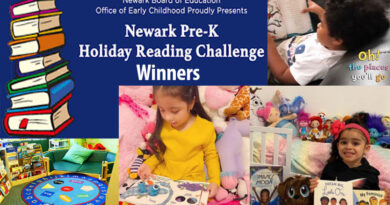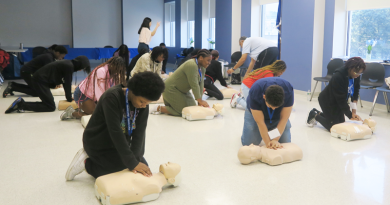Ways to Prevent Summer Learning Loss for Elementary Students
By Karen Alford
During the usual two to three month summer vacation for most students, summer learning loss, also known as “summer slide,” can occur. Summer slide refers to the academic ground students lose over the course of the summer, particularly regarding reading and math skills. It’s not a given though; there are things we can do to diminish the impact of the summer slide on our children.
We know education doesn’t have to take place in the classroom. We can use our homes, neighborhoods, and communities as vehicles for learning, doing, and growing. There are many free and low-cost ways to keep children active, engaged, and learning to prevent summer slide.
Parents and guardians are their children’s first teachers, so they know how to do this. The goal is to make sure your children read, do math, make art, and enjoy music so when they reenter the classroom, they can pick up where they left off.
Starting at home, that can mean helping an adult cook, with your child doing the measuring and reading the recipe. That’s math and reading, and the best part is you can have fun together and get to eat whatever you’ve made! It’s a way to introduce new foods and expand your child’s palate.
Our children will not be young forever, so really honoring the time we have with them as parents is important. Put down your cell phone, make time to just cuddle and read – and you can do that with 3rd, 4th, and 5th graders just as well as you can with your pre-K kid. That lets your children know that they’re safe and they matter.
There’s no substitute for when parents read with their kids, and kids read to their parents – it instills a sense of pride. Educators suggest parents have books on tables and floors, so children can access them and “read, read, read!” Other recommendations include daily reading and playing number, word, sight, and alphabet games. One teacher advises starting with just 10 minutes of reading each day, slowly increasing to 20minutes and discussing with your child what they’re reading, who the main character is, how the character solved a problem, and how the story ended.
Lessons can be informal, try having children read street signs, subway stops, and posters. A science lesson can be as simple and rewarding as planting a seed and having children draw pictures of the transformation from seed to plant to vegetable, keeping track of how many days it took for their beans or seeds to sprout.
Be sure to save time for journaling; a regular composition notebook your child can decorate with favorite characters might inspire them to write. Kids can keep a record of what they are thinking, dreaming about, or doing. Their journals can include mementos of places they’ve been and poetry about the sights and sounds of summer. These notebooks are also the places your budding artist can capture visual memories and sketches.
For real-world math, let your child practice purchasing items and asking how much change back he or she will get. For math fluency, make flash cards with basic addition, subtraction, multiplication and division exercises, or downloading free flashcards at www.factmonster.com/math/flashcards for drills.
We are fortunate to live in a world-class city filled with museums and educational institutions, many of which are free for children or free certain times and days of the week. Make sure to use all of the resources in our communities. That includes taking advantage of your local public library or main branch library, a source for great books (and air conditioning) and a place for read alouds and other activities for young learners.
Both the Brooklyn Museum and the Metropolitan Museum have suggested admission rates for New York residents, which means pay what you wish. The Queens Museum is free for children 18 and younger and the list goes on. Visit mommypoppins.com/ny-kids/free-times-at-nyc-museums for a full listing of all the free cultural institutions. Bring along a notepad and pencils for your children to draw the artworks that inspire them and let them choose the art they like best. Encourage them to make up a story to go with the art and draw it.
Summer is a great time for music and movement activities. There are also free music events over the summer – visit mommypoppins.com/new-york-city-kids/free-activities/free-outdoor-concerts-for-families-this-summer-in-nyc for some, or you can just turn on the radio and make your own Zumba class or do your own two-step together! Remember to send kids outside to play with their peers. They’ll be more fit if they’ve been outside running around playing tag, “red light, green light 123,” and creating their own games.
We don’t want children in front of a screen too much, but there are some excellent educational games, so when you do permit screen time, check out the resources at www.verywellfamily.com/best-free-educational-websites-for-kids-3129084.
Working full time? It may not be too late to enroll your child in a free summer instructional program provided by the New York City Department of Education, with free meals and field trips. Talk to your school principal or parent coordinator and visit www.schools.nyc.gov/enrollment/enroll-in-summer-school/summer-academy for more information.
Summer is meant to be a time to rest and renew and we want kids to do that! Just make sure your kids stay sharp in their skills in some way each day. While slowing down and enjoying the warm summer months is important, children can still walk into school prepared for September.


